Build a Strong Skeet Game
Posted by Junior Shooters
By Amy Cawley (17)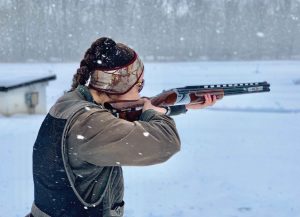
Whenever we talk with new shooters about Trap or Skeet, my father always says Skeet is the more difficult of the two to learn, but the easer to master. This makes a certain degree of sense. Targets always come from the same place (the high and low house), and will always fly the same speed and trajectory, crossing at the center stake (assuming no wind). It is this consistency that can lend itself to shooting some good scores – with the right kind of effort and preparation. I hope that some of the tips I provide can help get you to a point where you are no longer just attempting to break clays, but confidently and comfortable doing so.
PRACTICE:
There is more to practice than shooting full rounds one after the other. Walk onto a field with a specific purpose in mind. Sometimes the purpose is just having fun, and that’s OK – shooting clays should be fun. But to really progress in the sport here is what helps me. I always have a specific goal that I work to achieve that day. Think about each of the fundamentals – foot position, hold point, look point, break point, follow-through, and so forth. For example, making sure my foot positioning is consistent every time I walk onto the pad or, staying in the gun and following through each time I shoot. Practice in such a way that you can review and digest it later. Shoot a full box on one station if there is something specific you are working on. Use an orange cone or stack of clays placed one-third of the way to the center stake to reinforce hold points. Focus on the process, not the result. Another key component of any shooting activity is your mindset. Your mindset is something that can make or break how you shoot for that day, somake sure you start on a good note. A big thing for me was changing “I have to shoot today” to “I have the opportunity to shoot today”. It was a slight change that made a world of difference. It can, however, be a little tough sometimes to appreciate the “opportunity to shoot” in the winter (especially Western New York winter!), so just do your best.
Following a practice day, it’s always good to reflect. For the sake of your mental game, I choose to always start with the positives that went well that day. After that, for every negative, I do my best to think of two more positives. They don’t have to be huge victories, but just something to help remind yourself that your mistakes don’t define you. It is also a good idea to keep a shooting journal so that you can track how you have progressed.
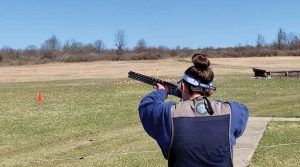 COMPETITION PREP:
COMPETITION PREP:
When preparing for a skeet competition there is a lot to take into consideration. These preparations can take place anywhere from months before the event to right before your squad goes out on the field.
Months:
You want to decide if you want to do big tournaments, small ones or both. If you do choose to compete in a larger one and hope to do well, you need to come up with a training plan. This may consist of scheduled practice dates and times, workouts, and deciding the right kind of food to fuel your body. These things should be taking place months before so that your body and mind are conditioned to compete at that higher level.
Days:
If you pre-registered for the event, verify your assigned field and shoot time. Always check – never assume! You should also be watching the weather so that you can prepare and dress accordingly. Pack a small duffel bag with extra clothes in case it rains or is colder (or warmer) than forecasted. Clean your gun and make sure the right choke is in the barrel. Completely unpack and repack your shooting bag to make sure you have everything you need.
Right before:
Get to your assigned field early. If there is another squad on the field ahead of you it is a great opportunity to see how the targets are flying and what they look like against the background. Before the start of your first round take a few minutes to walk the field. Stand at each station and look to your expected hold points for that station.
Find a landmark such as a tree that will help you confidently find that hold point each and every time during your rounds. Grab two of your squadmates and check the targets again. One of you should be on station 1, another at 4 and the third at 7. One and Seven are watching their bird to ensure it flies true over the center stake and lands close to the boundary marker. The person at Four is checking that a pair crosses at the center stake and would pass through the hoop if it was there. This is the time to ask the referee for an adjustment if something doesn’t look right. When everyone is ready to go, double-check your safety and enjoy the round.
RANDOM THOUGHTS: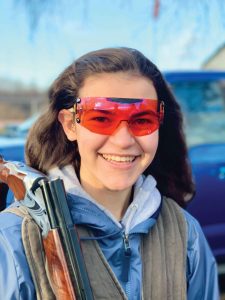
Another thing that is very valuable on the skeet field as well as the other discipline is how you choose to react to a missed target. It is very easy to let that one target get to you, but as I’m sure you have seen that often leads to another lost target. Shooting is a mental game and dwelling on a missed target will promote a poor mindset for the rest of that round.
In skeet your first miss requires you to take your option target. It is very easy to quickly go from your miss, right into your option and make the same exact mistake you just made. Make sure you have a routine that has become subconscious for when you miss. An idea for this might be to take a step back, close your eyes, take one deep breath and reset. When we miss our coach reminds us we must do something different when you execute the next shot. Always think positive, practice with your goals in mind, and watch your scores go up!
Author Profile:
Amy Cawley is a High School Junior and currently resides in Western New York. She shoots Trap, Skeet and Sporting Clays with the A&B Clay Busters team in the Scholastic Clay Target Program, as well as her high school Trap team in the High School Clay Target League. She is an NRA Level 1 (Junior) Shotgun Coach. Amy is a also a staff writer for Junior Shooters magazine and manages their Instagram page.
////////////////
CHECK OUT JUNIOR SHOOTERS magazine’s INSTAGRAM PAGE! QR CODE BELOW
Lots of great posts by junior shooters! See what they are talking about.


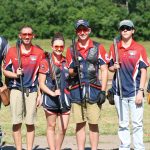
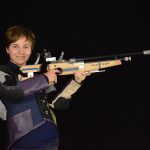
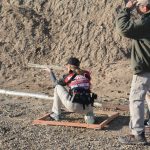
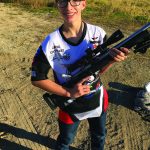
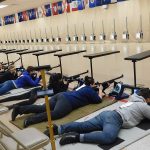
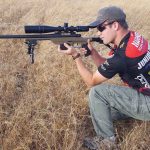
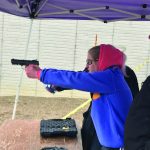
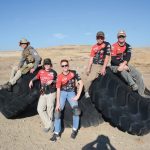

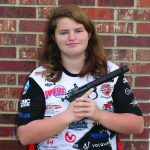





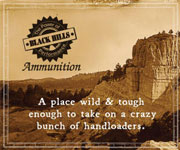
Comments
Leave a Reply
Please note: Comment moderation is currently enabled so there will be a delay between when you post your comment and when it shows up. Patience is a virtue; there is no need to re-submit your comment.
You must be logged in to post a comment.